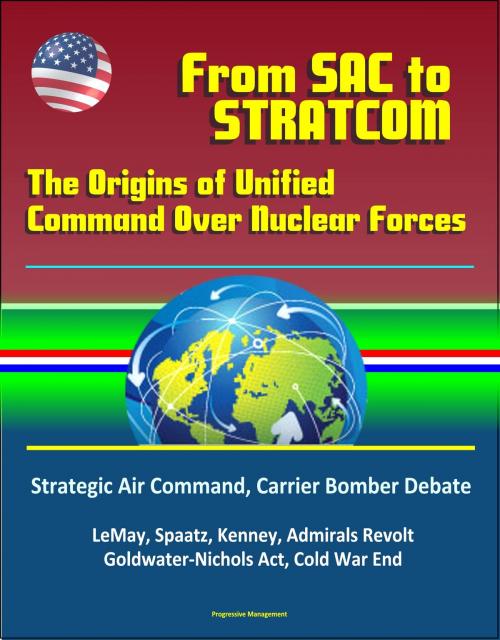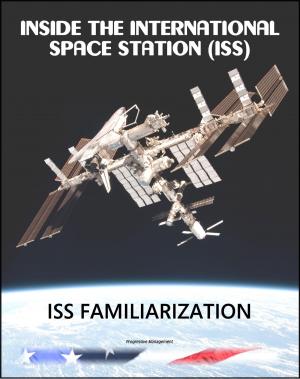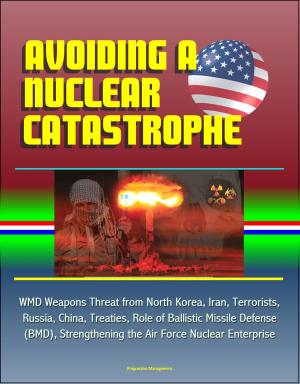From SAC To STRATCOM: The Origins of Unified Command Over Nuclear Forces - Strategic Air Command, Carrier Bomber Debate, LeMay, Spaatz, Kenney, Admirals Revolt, Goldwater-Nichols Act, Cold War End
Nonfiction, History, Military, Nuclear Warfare, Aviation| Author: | Progressive Management | ISBN: | 9781310169403 |
| Publisher: | Progressive Management | Publication: | May 12, 2016 |
| Imprint: | Smashwords Edition | Language: | English |
| Author: | Progressive Management |
| ISBN: | 9781310169403 |
| Publisher: | Progressive Management |
| Publication: | May 12, 2016 |
| Imprint: | Smashwords Edition |
| Language: | English |
Professionally converted for accurate flowing-text e-book format reproduction, this book examines the creation of the United States Strategic Command (USSTRATCOM). This assessment reviews the past and recent attempts to create a unified strategic command over nuclear forces. Interviews conducted by the author with the major individuals involved in the current creation of STRATCOM, along with a historical review of past attempts to consolidate nuclear forces provide the basis for this thesis. In examining why STRATCOM was created, two competing arguments were used to answer the question presented. The main argument for the creation of STRATCOM was the fact that there was no need to keep strategic nuclear forces in separate commands at the end of the Cold War. The counter argument is that the Gold water-Nichols Act of 1986 alone forced the creation of STRATCOM. The results from this research show that there is now a trend among the military leaders to cooperate among themselves. The author uses the reasons for the creation of STRATCOM as a possible blueprint for how the Services will react to possible Unified Command Plan changes in the future.
CHAPTER I * INTRODUCTION * CHAPTER II * STRATEGIC AIR COMMAND * A. BACKGROUND OF STRATEGIC AIR COMMAND * B. JOINT STRATEGIC TARGET PLANNING STAFF (JSTPS) * C. NUCLEAR FORCE POSTURE * CHAPTER III * THE ORIGINS OF A STRATEGIC COMMAND * A. INTRODUCTION * B. THE CARRIER VS. THE BOMBER DEBATE * C. THE ADMIRALS REVOLT * D. .IMPLICATIONS OF THE CARRIER ISSUE * E. THE FIRST ATTEMPT TO CONSOLIDATE STRATEGIC FORCES * F. CONCLUSION * CHAPTER IV * DEFENSE REORGANIZATION IN THE 1980s * A. INTRODUCTION * B. THE GOLDWATER-NICHOLS ACT OF 1986 * C. THE UNIFIED COMMAND PLAN (UCP)/UCP REVIEW OF 1987 * D. CONCLUSION * CHAPTER V * THE END OF THE COLD WAR ERA * A. INTRODUCTION * B. THE CHANGING OF THE GUARD AT THE JCS * C. THE END OF STRATEGIC AIR COMMAND * D. A NEW ERA OF SERVICE COOPERATION * E. CONCLUSION * CHAPTER VI * CONCLUSIONS
Professionally converted for accurate flowing-text e-book format reproduction, this book examines the creation of the United States Strategic Command (USSTRATCOM). This assessment reviews the past and recent attempts to create a unified strategic command over nuclear forces. Interviews conducted by the author with the major individuals involved in the current creation of STRATCOM, along with a historical review of past attempts to consolidate nuclear forces provide the basis for this thesis. In examining why STRATCOM was created, two competing arguments were used to answer the question presented. The main argument for the creation of STRATCOM was the fact that there was no need to keep strategic nuclear forces in separate commands at the end of the Cold War. The counter argument is that the Gold water-Nichols Act of 1986 alone forced the creation of STRATCOM. The results from this research show that there is now a trend among the military leaders to cooperate among themselves. The author uses the reasons for the creation of STRATCOM as a possible blueprint for how the Services will react to possible Unified Command Plan changes in the future.
CHAPTER I * INTRODUCTION * CHAPTER II * STRATEGIC AIR COMMAND * A. BACKGROUND OF STRATEGIC AIR COMMAND * B. JOINT STRATEGIC TARGET PLANNING STAFF (JSTPS) * C. NUCLEAR FORCE POSTURE * CHAPTER III * THE ORIGINS OF A STRATEGIC COMMAND * A. INTRODUCTION * B. THE CARRIER VS. THE BOMBER DEBATE * C. THE ADMIRALS REVOLT * D. .IMPLICATIONS OF THE CARRIER ISSUE * E. THE FIRST ATTEMPT TO CONSOLIDATE STRATEGIC FORCES * F. CONCLUSION * CHAPTER IV * DEFENSE REORGANIZATION IN THE 1980s * A. INTRODUCTION * B. THE GOLDWATER-NICHOLS ACT OF 1986 * C. THE UNIFIED COMMAND PLAN (UCP)/UCP REVIEW OF 1987 * D. CONCLUSION * CHAPTER V * THE END OF THE COLD WAR ERA * A. INTRODUCTION * B. THE CHANGING OF THE GUARD AT THE JCS * C. THE END OF STRATEGIC AIR COMMAND * D. A NEW ERA OF SERVICE COOPERATION * E. CONCLUSION * CHAPTER VI * CONCLUSIONS















